MaryAnn Bernal's Blog, page 143
October 11, 2015
Did Roman men dodge their military service?
History Extra
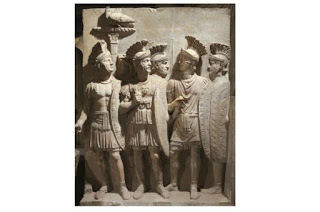 Praetorian officers, 2nd century AD. (Photo By DEA / G DAGLI ORTI/De Agostini/Getty Images)
Praetorian officers, 2nd century AD. (Photo By DEA / G DAGLI ORTI/De Agostini/Getty Images)
Although by no means common in the early Empire, some men attempted to escape service by cutting off their thumbs so they couldn’t wield a sword.
Draft-dodging, however, was dealt with severely. Emperor Augustus once punished an aristocrat who removed the thumbs of his two sons, by selling him into slavery and auctioning off his property.
In AD 368 – when barbarian tribes were migrating in ever-larger numbers into the Empire – conscription avoidance was so endemic, stiffer penalties were imposed, including public burnings.
By the end of the fourth century, Emperor Theodosius passed a law that forced the thumb-less to serve and made any parent or landowner presenting a mutilated individual find a second to make good the loss.
Eventually, a lack of new recruits, combined with losses in battle, meant Rome became reliant on barbarian migrants to fill staff shortages.
Answered by one of our Q&A experts, Miles Russell. For more fascinating question by Miles, and the rest of our panel, pick up a copy of History Revealed! Available in print and for digital devices.
 Praetorian officers, 2nd century AD. (Photo By DEA / G DAGLI ORTI/De Agostini/Getty Images)
Praetorian officers, 2nd century AD. (Photo By DEA / G DAGLI ORTI/De Agostini/Getty Images) Although by no means common in the early Empire, some men attempted to escape service by cutting off their thumbs so they couldn’t wield a sword.
Draft-dodging, however, was dealt with severely. Emperor Augustus once punished an aristocrat who removed the thumbs of his two sons, by selling him into slavery and auctioning off his property.
In AD 368 – when barbarian tribes were migrating in ever-larger numbers into the Empire – conscription avoidance was so endemic, stiffer penalties were imposed, including public burnings.
By the end of the fourth century, Emperor Theodosius passed a law that forced the thumb-less to serve and made any parent or landowner presenting a mutilated individual find a second to make good the loss.
Eventually, a lack of new recruits, combined with losses in battle, meant Rome became reliant on barbarian migrants to fill staff shortages.
Answered by one of our Q&A experts, Miles Russell. For more fascinating question by Miles, and the rest of our panel, pick up a copy of History Revealed! Available in print and for digital devices.
Published on October 11, 2015 03:30
History Trivia - Battle of Tours - Charles Martel victorious
October 11
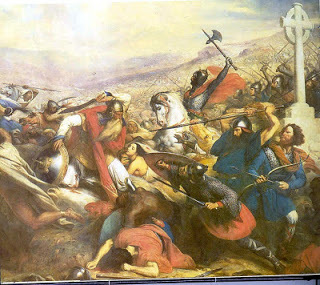
732 Battle of Tours: Near Poitiers, France, the leader of the Franks, Charles Martel and his men, defeated a large army of Moors, stopping the Muslims from spreading into Western Europe. The governor of Cordoba, Abdul Rahman Al Ghafiqi, was killed during the battle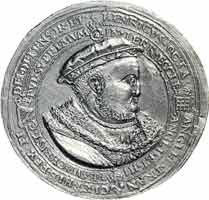
1521 Pope Leo X granted Henry VIII the title Defender of the Faith for a tract defending Catholicism.
1542 Thomas Wyatt died. The English lyrical poet is credited with introducing the sonnet into English.

732 Battle of Tours: Near Poitiers, France, the leader of the Franks, Charles Martel and his men, defeated a large army of Moors, stopping the Muslims from spreading into Western Europe. The governor of Cordoba, Abdul Rahman Al Ghafiqi, was killed during the battle

1521 Pope Leo X granted Henry VIII the title Defender of the Faith for a tract defending Catholicism.

1542 Thomas Wyatt died. The English lyrical poet is credited with introducing the sonnet into English.
Published on October 11, 2015 01:00
October 10, 2015
L.A. Punk Rocker author, Brenda Perlin, reviews Scribbler Tales Volumes One - Five by Mary Ann Bernal

Scribbler Tales Volumes One - Five
by Mary Ann Bernal (Goodreads Author)

Brenda Perlin's review
Oct 10, 15 5 of 5 stars
Scribbler Tales: A Collection of Short Stories by Mary Ann Bernal, all dark, are written in such a way that you have to read more. The author crafts stories that pull her readers in. Wanting more but getting just enough. There is great skill that goes into her stories but she seems to write with ease. The words flow effortlessly. This is a smart collection that kept me guessing. Slices of life that no matter how far fetched feel authentic.
Second volume of Scribbler Tales is filled with stories of human nature at its finest and certainly at its worse. These pieces are sure to intrigue and inspire. The writing is flawless and the characters were all unique and yet life-like. The author has a way with words and setting a scene that makes you feel that you are among the characters. Her stories bring you to another place and are always a good escape into the unknown.
Volume 3 is another great read. So enjoyed the compelling stories that are unique, well-written and filled with mystery. If you haven’t read Scribbler Tales you should pick up any one of the volumes. They are all worth it for entertainment value. The twists kept me guessing all the way through. I love that!
Volume 4 is rich with stories of greed, deceit and murder. I was instantly heaved into the suspenseful worlds the author has created. Leaving me speechless at times and always wowed. The roller coaster ride is a rocky one which left me wanting more. I so enjoyed the smart twists and the unexpected turns.
Mary Ann Bernal’s Scribbler Tales Volume Five is filled with smart, suspenseful, riveting, and edge of your seat stories. Each one is a gem upon itself. I enjoyed their twists that I didn’t see coming. Very unique pieces that took me outside myself and welcomed into extraordinary adventures. Amazon USAmazon UK
Published on October 10, 2015 06:06
History Trivia - Prince Edward (Black Prince) marries Joan Plantagenet
October 10
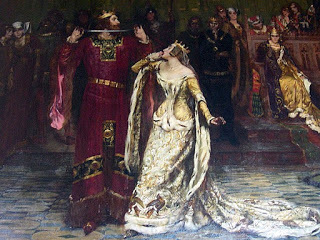
1361 Prince Edward (Black Prince) married Joan Plantagenet. The "Fair Maid of Kent" was not considered the ideal wife for the heir of the English throne. Joan was the mother of Richard II.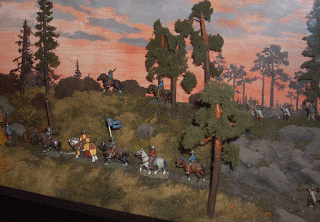
1471 Battle of Brunkeberg in Stockholm: Sten Sture the Elder, the Regent of Sweden, with the help of farmers and miners, repelled an attack by Christian I, King of Denmark.
1631 During the Thirty Years War a Saxon army successfully entered Prague (capital and largest city of the Czech Republic). The war was fought primarily in what is now Germany, and at various points involved most countries in Europe, and was one of the most destructive conflicts in European history.

1361 Prince Edward (Black Prince) married Joan Plantagenet. The "Fair Maid of Kent" was not considered the ideal wife for the heir of the English throne. Joan was the mother of Richard II.

1471 Battle of Brunkeberg in Stockholm: Sten Sture the Elder, the Regent of Sweden, with the help of farmers and miners, repelled an attack by Christian I, King of Denmark.

1631 During the Thirty Years War a Saxon army successfully entered Prague (capital and largest city of the Czech Republic). The war was fought primarily in what is now Germany, and at various points involved most countries in Europe, and was one of the most destructive conflicts in European history.
Published on October 10, 2015 01:00
October 9, 2015
Mr. Chuckles bumped into UK crime author Heather Burnside while stirring the Wizard's Cauldron.

The Wizard speaks:
Heather Burnside is a UK based crime author who writes hard-core crime fiction based in the north of the country.
Violent local bosses and their scheming, trashy molls, nihilistic urban tearaways, shadowy fixers, psychopathic hitmen, and a small army of hooded robbers, muggers and dealers populate the pages of her novels, and because of the immediacy and realism, the impression arises that the cast list of her novels can be found on a high street near you, wasting valuable mugjob time in the Billy Hills, or selling prescription jellies round the pool table in the Dog and Duck.
I like that realism in writing and when the opportunity arose to interview Heather I took it with both hands. She is just about to release her next book. I picked up the Wizphone and called her as she researched her newest endeavour. Here's what she had to say.
Published on October 09, 2015 05:11
Book Launch - Scribbler Tales Volumes One to Five by Mary Ann Bernal

Volume OneDesperate Measures; Forbidden Lore; Forever Lost; The Hourglass; Sail with Me
Volume TwoBroken Promises; Deception; Endgame Malice; The Portrait
Volume ThreeHidden Lies; Nightmare; Payback; The Night Stalker; Turning Point
Volume FourAbducted; Cunning; Enamored; Reckless; Safeguard
Volume Five
Bloodlust; Illusion; Manhunt; Pandemic; Revenge
Amazon US
Amazon UK
Published on October 09, 2015 04:00
17th-century Great British Bake Off recipes
History Extra
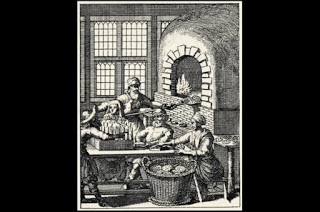
All images are © Wellcome Images
Hannah Bisaker’s puff pastry, 1692
To make puff paist
"Take halfe a quortorh of The Finest Flower then mix yo Flower and water and
Four white of Eggs together, mould up yo paste but not too stiff,
Then role yo Past out into a Sheete. Then lay some Butter in litle Pecies
Till you have Filled yo sheete but doe not lay it Towards The ends to neare,
Then Dust a little Flower with yo Drudging Box then Fould it up
Twice before you put any more Then doe soe Till yo have put in
a pound keeping it a little dusted very Fine yo put it to yo Butter,
handle it a little Then cut it to yo own Fancie
Lady Ann Fanshawe's icy cream, 1651-1707
To make Icy Cream
Take three pints of the best cream, boyle it with
a blade of Mace, or else perfume it with orang flower water
or Amber-Greece, sweeten the Cream, with sugar let it stand
till it is quite cold, then put it into Boxes, ether of Silver
or tinn then take, Ice chopped into small peeces and
putt it into a tub and set the Boxes in the Ice couering
them all over, and let them stand in the Ice two
hours, and the Cream Will come to be Ice in the Boxes,
then turne them out into a salvar with some of the same
Seasoned Cream, so sarue it up at the Table.
Lady Ann Fanshawe's sugar cakes, 1651-1707
To make Sugar Cakes
Take 2 pound of Butter, one pound of fine Sugar, the yolkes of nine
Egs, a full Spoonfull of Mace beat & searsed [sifted], as much Flower as this
will well wett making them so stiffe as you may rowle it out, then
with the Cup of a glasse of what Size you please cutt them into
round Cakes & pricke them and bake them.
Orange pudding c1685-c1725
To make Orange Pudding
Take 2 Oranges pare them and cut them in little pieces,
then take 12 Ounces of fine Sugar, beat them in a stone morter,
put to them 12 Ounces of butter and 12 Yolkes of Eggs,
and beat all these together, then make a very good paste,
and lay a sheet of paste upon a dish and so lay on your pudding,
and cover it with another sheet of paste,
and set it in the oven, an hour will bake it
How to Cook a Husband (c1710-1725)
How to Cook a Husband
As Mr Glass said of the hare, you must first catch him. Having done so,
the mode of cooking him, so as to make a good dish of him, is as follows.
Many good husbands are spoiled in the cooking; some women go about
it as if their husbands were bladders, and blow them up. Others keep them
constantly in hot water, while others freeze them by conjugal coldness.
Some smother them with hatred, contention and variance, and some keep
them in pickle all their lives. These women always serve them up with tongue
sauce. Now it cannot be supposed that husbands will be tender and good if
managed in that way. But they are, on the contrary, very delicious when
managed as follows: Get a large jar called the jar of carefulness, (which all
good wives have on hand), place your husband in it, and set him near the
fire of conjugal love; let the fire be pretty hot, but especially let it be clear - above
all, let the heat be constant. Cover him over with affection, kindness and
subjection. Garnish with modest, becoming familiarity, and the spice of
pleasantry; and if you had kisses and other confectionaries let them be
accompanied with a sufficient portion of secrecy, mixed with prudence and
moderation. We would advise all good wives to try this receipt and realise
how admirable a dish a husband is when properly cooked.
In our July podcast, Dr Sara Pennell explores changing attitudes to food in the early modern period. To listen, click here.
More recipes can be found at the Wellcome Library.

All images are © Wellcome Images
Hannah Bisaker’s puff pastry, 1692

To make puff paist
"Take halfe a quortorh of The Finest Flower then mix yo Flower and water and
Four white of Eggs together, mould up yo paste but not too stiff,
Then role yo Past out into a Sheete. Then lay some Butter in litle Pecies
Till you have Filled yo sheete but doe not lay it Towards The ends to neare,
Then Dust a little Flower with yo Drudging Box then Fould it up
Twice before you put any more Then doe soe Till yo have put in
a pound keeping it a little dusted very Fine yo put it to yo Butter,
handle it a little Then cut it to yo own Fancie
Lady Ann Fanshawe's icy cream, 1651-1707

To make Icy Cream
Take three pints of the best cream, boyle it with
a blade of Mace, or else perfume it with orang flower water
or Amber-Greece, sweeten the Cream, with sugar let it stand
till it is quite cold, then put it into Boxes, ether of Silver
or tinn then take, Ice chopped into small peeces and
putt it into a tub and set the Boxes in the Ice couering
them all over, and let them stand in the Ice two
hours, and the Cream Will come to be Ice in the Boxes,
then turne them out into a salvar with some of the same
Seasoned Cream, so sarue it up at the Table.
Lady Ann Fanshawe's sugar cakes, 1651-1707

To make Sugar Cakes
Take 2 pound of Butter, one pound of fine Sugar, the yolkes of nine
Egs, a full Spoonfull of Mace beat & searsed [sifted], as much Flower as this
will well wett making them so stiffe as you may rowle it out, then
with the Cup of a glasse of what Size you please cutt them into
round Cakes & pricke them and bake them.
Orange pudding c1685-c1725

To make Orange Pudding
Take 2 Oranges pare them and cut them in little pieces,
then take 12 Ounces of fine Sugar, beat them in a stone morter,
put to them 12 Ounces of butter and 12 Yolkes of Eggs,
and beat all these together, then make a very good paste,
and lay a sheet of paste upon a dish and so lay on your pudding,
and cover it with another sheet of paste,
and set it in the oven, an hour will bake it
How to Cook a Husband (c1710-1725)

How to Cook a Husband
As Mr Glass said of the hare, you must first catch him. Having done so,
the mode of cooking him, so as to make a good dish of him, is as follows.
Many good husbands are spoiled in the cooking; some women go about
it as if their husbands were bladders, and blow them up. Others keep them
constantly in hot water, while others freeze them by conjugal coldness.
Some smother them with hatred, contention and variance, and some keep
them in pickle all their lives. These women always serve them up with tongue
sauce. Now it cannot be supposed that husbands will be tender and good if
managed in that way. But they are, on the contrary, very delicious when
managed as follows: Get a large jar called the jar of carefulness, (which all
good wives have on hand), place your husband in it, and set him near the
fire of conjugal love; let the fire be pretty hot, but especially let it be clear - above
all, let the heat be constant. Cover him over with affection, kindness and
subjection. Garnish with modest, becoming familiarity, and the spice of
pleasantry; and if you had kisses and other confectionaries let them be
accompanied with a sufficient portion of secrecy, mixed with prudence and
moderation. We would advise all good wives to try this receipt and realise
how admirable a dish a husband is when properly cooked.
In our July podcast, Dr Sara Pennell explores changing attitudes to food in the early modern period. To listen, click here.
More recipes can be found at the Wellcome Library.
Published on October 09, 2015 02:30
History Trivia - Temple of Apollo dedicated on the Palatine Hill
October 9

28 BC The Temple of Apollo was dedicated on the Palatine Hill in Rome.
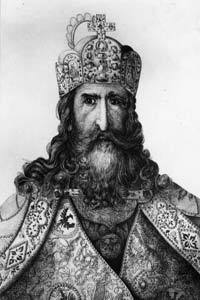
768 Carloman I and Charlemagne were crowned Kings of The Franks.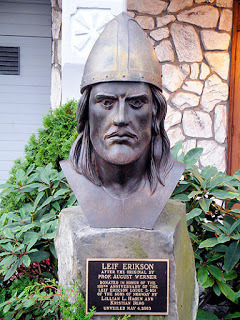
1000 Leif Ericson, the great Norse explorer, became the first European to land in North America, which he called Vinland. The date is celebrated as Leif Ericson Day in Norway.
.

28 BC The Temple of Apollo was dedicated on the Palatine Hill in Rome.


768 Carloman I and Charlemagne were crowned Kings of The Franks.

1000 Leif Ericson, the great Norse explorer, became the first European to land in North America, which he called Vinland. The date is celebrated as Leif Ericson Day in Norway.
.
Published on October 09, 2015 01:00
October 8, 2015
Shrine dedicated to King Nectanebo I unearthed in Egypt
Ancient Origins

An Egyptian and German archaeological team sifting through the ruins of a temple dedicated to
the ancient King Nectanebo I has found building blocks and parts of the ceiling, which was decorated with stars. Authorities hope to rebuild and restore the shrine.
The 30th Dynasty king, whose name is also spelled Nakhtanebu, lived in the fourth century BC. His house was the last native Egyptian royal line before Persians reconquered Egypt in 343 BC and overthrew Nectanebo’s grandson.
The team unearthed blocks of the king’s shrine while working in the Ain Shams area of Cairo, which was known as Oun city in ancient times, reports Ahram Online. The team also found mud bricks that were part of a fence surrounding Oun.
The shrine blocks measure between 75 cm (30 inches) and 1.25 meters (50 inches). They are carved of basalt and have engraved on them the names of Egyptian regions of the time. Two of the blocks also show the god Hapi holding offerings.
Oun is one Egypt’s oldest cities, but it was largely destroyed when stones from its temples and buildings were used to construct medieval Cairo, Ahram Online says.
In April, the team excavating Heliopolis Temple found part of a royal statue of King Merineptah, who was of a much earlier time than Nectanebo—the 19th Dynasty (1291 to 1187 BC). Merineptah was depicted making offerings to deities. The archaeologists found pottery and other evidence of human habitation from the pre-dynastic and early dynastic periods.
A carved basalt block, part of the shrine to Nectanebo found last spring, depicts a falcon. The bird may be the god Horus.
 This carved basalt block showing a falcon was found earlier this year at Nectanebo’s shrine. (Egyptian Ministry of Antquities photo)The Late Dynastic period was one of upheaval in ancient Egypt. The nation had been controlled by Persia for a time, then won independence, and was controlled by Persia again just prior to Alexander’s conquest.
This carved basalt block showing a falcon was found earlier this year at Nectanebo’s shrine. (Egyptian Ministry of Antquities photo)The Late Dynastic period was one of upheaval in ancient Egypt. The nation had been controlled by Persia for a time, then won independence, and was controlled by Persia again just prior to Alexander’s conquest.
King Nectanebo I ruled from 379 to 360 BC after he overthrew the 29th Dynasty ruler Nepherites. Nectanebo’s grandson, Nectanebo II, was king when Persians retook the country around 343 BC.
Persian rule may have seemed like a yoke to Egypt’s rulers, but it very well may have been beneficial to the common people because Persian rulers abolished slavery and instituted other human rights reforms when they came to power. Persian kings extended their reforms to lands they conquered while allowing religious freedom.
In a clay cylinder that has been called the first Charter of Human Rights, King Cyrus of Persia talks about lifting “unbecoming yokes” of Babylonians and abolishing forced labor. The Persians apparently also gave grain and meat to poor people, though from the website The Circle of Ancient Iranian Studies it is unclear if such rations were given in Egypt.
Alexander wanted to conquer Egypt and its ports because he needed a coastal base for commercial and military reasons.
 Remnant of the bust of Pharaoh Merineptah (Egypt Ministry of Antiquities photo)The end of the 30th Dynasty came about a decade before Alexander arrived. Nectanebo II, the grandson of the man depicted in the shrine unearthed this year, had fled to the Sudan in 343 BC in the face of Persian incursions. The Persians left when Alexander and his forces arrived.
Remnant of the bust of Pharaoh Merineptah (Egypt Ministry of Antiquities photo)The end of the 30th Dynasty came about a decade before Alexander arrived. Nectanebo II, the grandson of the man depicted in the shrine unearthed this year, had fled to the Sudan in 343 BC in the face of Persian incursions. The Persians left when Alexander and his forces arrived.
Egypt’s Persian governor Mazaces met Alexander without any armed forces and turned over the treasury’s 800 talents. Mazaces remained as part of the new administration of governor Cleomenes and established Egypt’s royal mint around 331 BC.
After Alexander died, the Ptolemaic Dynasty ruled Egypt until around 30 BC, when Rome conquered Egypt. The Byzantine Empire ruled Egypt later, until eventually Arabs conquered Egypt in the seventh century AD.
Featured image: Part of the shrine showing Pharaoh Nectanebo I, who was the last native king to rule Egypt before the Greeks conquered. (Ahram Online photo)
By Mark Miller

An Egyptian and German archaeological team sifting through the ruins of a temple dedicated to
the ancient King Nectanebo I has found building blocks and parts of the ceiling, which was decorated with stars. Authorities hope to rebuild and restore the shrine.
The 30th Dynasty king, whose name is also spelled Nakhtanebu, lived in the fourth century BC. His house was the last native Egyptian royal line before Persians reconquered Egypt in 343 BC and overthrew Nectanebo’s grandson.
The team unearthed blocks of the king’s shrine while working in the Ain Shams area of Cairo, which was known as Oun city in ancient times, reports Ahram Online. The team also found mud bricks that were part of a fence surrounding Oun.
The shrine blocks measure between 75 cm (30 inches) and 1.25 meters (50 inches). They are carved of basalt and have engraved on them the names of Egyptian regions of the time. Two of the blocks also show the god Hapi holding offerings.
Oun is one Egypt’s oldest cities, but it was largely destroyed when stones from its temples and buildings were used to construct medieval Cairo, Ahram Online says.
In April, the team excavating Heliopolis Temple found part of a royal statue of King Merineptah, who was of a much earlier time than Nectanebo—the 19th Dynasty (1291 to 1187 BC). Merineptah was depicted making offerings to deities. The archaeologists found pottery and other evidence of human habitation from the pre-dynastic and early dynastic periods.
A carved basalt block, part of the shrine to Nectanebo found last spring, depicts a falcon. The bird may be the god Horus.
 This carved basalt block showing a falcon was found earlier this year at Nectanebo’s shrine. (Egyptian Ministry of Antquities photo)The Late Dynastic period was one of upheaval in ancient Egypt. The nation had been controlled by Persia for a time, then won independence, and was controlled by Persia again just prior to Alexander’s conquest.
This carved basalt block showing a falcon was found earlier this year at Nectanebo’s shrine. (Egyptian Ministry of Antquities photo)The Late Dynastic period was one of upheaval in ancient Egypt. The nation had been controlled by Persia for a time, then won independence, and was controlled by Persia again just prior to Alexander’s conquest.King Nectanebo I ruled from 379 to 360 BC after he overthrew the 29th Dynasty ruler Nepherites. Nectanebo’s grandson, Nectanebo II, was king when Persians retook the country around 343 BC.
Persian rule may have seemed like a yoke to Egypt’s rulers, but it very well may have been beneficial to the common people because Persian rulers abolished slavery and instituted other human rights reforms when they came to power. Persian kings extended their reforms to lands they conquered while allowing religious freedom.
In a clay cylinder that has been called the first Charter of Human Rights, King Cyrus of Persia talks about lifting “unbecoming yokes” of Babylonians and abolishing forced labor. The Persians apparently also gave grain and meat to poor people, though from the website The Circle of Ancient Iranian Studies it is unclear if such rations were given in Egypt.
Alexander wanted to conquer Egypt and its ports because he needed a coastal base for commercial and military reasons.
 Remnant of the bust of Pharaoh Merineptah (Egypt Ministry of Antiquities photo)The end of the 30th Dynasty came about a decade before Alexander arrived. Nectanebo II, the grandson of the man depicted in the shrine unearthed this year, had fled to the Sudan in 343 BC in the face of Persian incursions. The Persians left when Alexander and his forces arrived.
Remnant of the bust of Pharaoh Merineptah (Egypt Ministry of Antiquities photo)The end of the 30th Dynasty came about a decade before Alexander arrived. Nectanebo II, the grandson of the man depicted in the shrine unearthed this year, had fled to the Sudan in 343 BC in the face of Persian incursions. The Persians left when Alexander and his forces arrived.Egypt’s Persian governor Mazaces met Alexander without any armed forces and turned over the treasury’s 800 talents. Mazaces remained as part of the new administration of governor Cleomenes and established Egypt’s royal mint around 331 BC.
After Alexander died, the Ptolemaic Dynasty ruled Egypt until around 30 BC, when Rome conquered Egypt. The Byzantine Empire ruled Egypt later, until eventually Arabs conquered Egypt in the seventh century AD.
Featured image: Part of the shrine showing Pharaoh Nectanebo I, who was the last native king to rule Egypt before the Greeks conquered. (Ahram Online photo)
By Mark Miller
Published on October 08, 2015 02:30
History Trivia - Battle of Cibalae Roman Emperor Licinius defeated
October 8
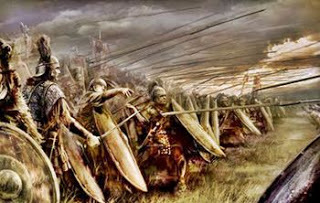
314 Roman Emperor Licinius was defeated by Constantine I at the Battle of Cibalae, losing his European territories. Co-author of the Edict of Milan that granted official toleration to Christians in the Roman Empire, for the majority of his reign he was the rival of Constantine I until he was finally defeated at the Battle of Adrianople, and was executed on Constantine's orders.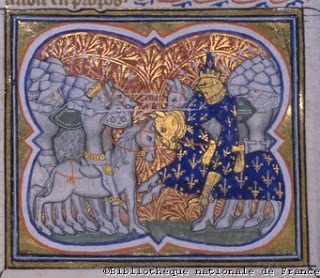
876 Charles the Bald is defeated at the Battle of Andernach.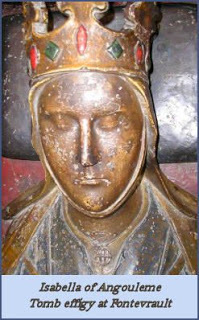
1200 Isabella of Angoulême, second wife of King John, was crowned Queen consort of England. Isabella had five children by the king including his heir Henry who succeeded John as Henry III of England. In 1220 Isabella married Hugh X of Lusignan, Count of La Marche, by whom she had another nine children.

314 Roman Emperor Licinius was defeated by Constantine I at the Battle of Cibalae, losing his European territories. Co-author of the Edict of Milan that granted official toleration to Christians in the Roman Empire, for the majority of his reign he was the rival of Constantine I until he was finally defeated at the Battle of Adrianople, and was executed on Constantine's orders.

876 Charles the Bald is defeated at the Battle of Andernach.

1200 Isabella of Angoulême, second wife of King John, was crowned Queen consort of England. Isabella had five children by the king including his heir Henry who succeeded John as Henry III of England. In 1220 Isabella married Hugh X of Lusignan, Count of La Marche, by whom she had another nine children.
Published on October 08, 2015 01:30



